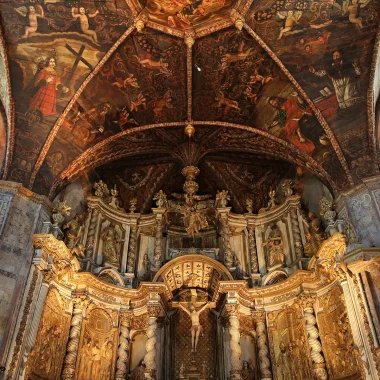Lovers of history and heritage, discover the history of the Penitents of Villefranche de Rouergue.
The origin of the brotherhoods of penitents
The concept of “penance” was born in the XNUMXth century in Italy, in the sense of “gift of oneself to the other”, in resumption of the biblical quotation: “The time is fulfilled and the kingdom of God is near; do penance”. With the horrors of the Hundred Years War and the multiple epidemics that struck Europe, a multitude of mutual aid brotherhoods developed throughout Europe.
Nevertheless, it was at the dawn of the XNUMXth century that they experienced a considerable boom, in reaction to the rise of the Protestantism breathed by Martin Luther. In 1517, this German monk shook the Catholic Church of Rome by denouncing all the abuses and excesses that sat within the Vatican itself. In particular, he protested against the system of indulgences which allowed the Pope to finance the reconstruction of Saint Peter's Basilica. Indeed, the papacy had been enriching itself for several decades on the credulity of the faithful who thought they could free themselves from their sins and obtain divine salvation in exchange for money. This is how the Protestant reform originated in Germany before spreading to Switzerland and France via John Calvin. Quickly, this new doctrine freed from the Holy See touched the elites of a large number of municipalities including Villefranche-de-Rouergue.

To fight against this, the Roman Catholic Church established, between 1545 and 1563, the Council of Trent. The purpose of this gathering was to correct the misdeeds denounced by the Huguenot authorities and to reaffirm the message of the gospel. Moreover, he maintained the seven sacraments, including that of penance, and promoted the brilliance and luxury of papal authority, through the development of baroque art.
In order to take the opposite view of the absence of images advocated in Protestantism, Catholicism decided to spread the power of Rome by enriching and dramatizing its buildings with a color scheme, gilding and movements. Unfortunately, this did not prevent the outbreak of the Wars of Religion with the massacre of Wassy in 1562. A series of eight conflicts of extreme violence tore the French people apart, the most significant episode of which remains the night of Saint Bartholomew , August 24, 1572, where tens of thousands of Protestants were massacred throughout the kingdom.
Who were the penitents?
After the signing of the Edict of Nantes by Henri IV in 1598, it was decided to no longer fight against the Protestants by force but by a reaffirmation of Catholic thought. Now the idea that good works would save souls from hell, men and women, anxious to access eternal life, joined together in brotherhoods of penitents. The latter, mainly composed of lay people, met in their chapel to make devotions before leaving for the city to help the poorest. Among their main tasks, they cared for the sick, cared for orphans, cared for the poor, accompanied those condemned to death and organized funeral ceremonies. They wore a frock whose color materialized their membership as well as a rope at the waist and a rosary. However, the major element of their dress was the capuce, or the hood they wore on their heads, as a sign of humility and sanitary protection.
Penitents in Villefranche de Rouergue
Two brotherhoods of this type were born in Villefranche-de-Rouergue in 1609, that of blue penitents, under the name of Saint Jerome, and that of black penitents, under the protection of the Holy Cross. The latter, however, did not have the necessary funding during her first years of life to own her own chapel. The purchase of a plot at the northern end of the bastide, the financing of the structural work and the donation of several penitents allowed the realization of the Chapel. Moreover, one of these colleagues still rests today in the heart of the building, according to his very last testamentary wishes.
The brotherhood reached its peak in the first half of the 300th century with more than XNUMX members, both men and women. It grew rich thanks to the subscriptions of its members as well as to the auctions which were carried out before each procession, on Good Friday and on the day of the Exaltation of the Holy Cross. The greatest donor had the honor and the privilege of incarnating Christ during the pilgrimage which left the chapel to reach the Chapel of Saint-Jean d'Aigremont, after passing through the streets of the city and through the various stations of the Calvary. This money made it possible to call upon extremely talented workshops whether for the lapidary parts and the woodwork, which have nothing to envy to the majestic baroque buildings of the Eternal City.
However, the vitality of the brotherhood, which was dissolved during the French Revolution before resuming in 1805, only lasted until 1905 and the law of separation of Church and State. Indeed, there were not enough members and therefore not enough money to maintain acts of charity in the heart of the city. In 1920, the chapel was classified as a Historic Monument before major restoration projects began in the 1970s.




